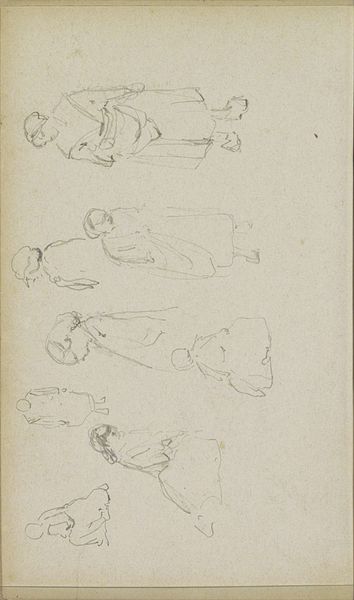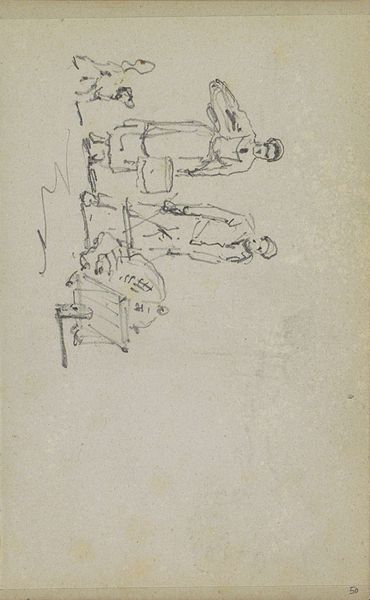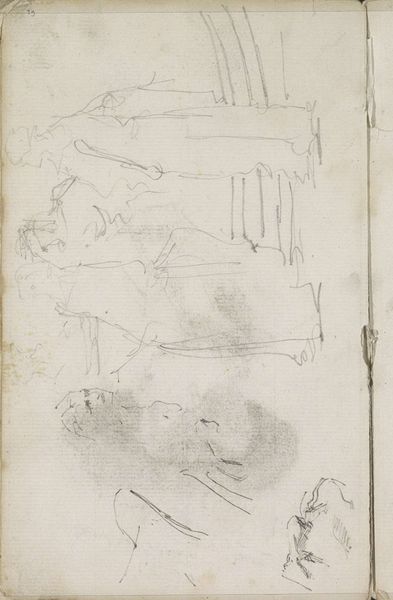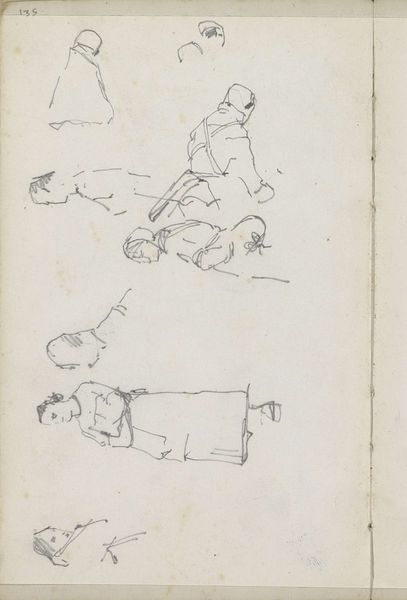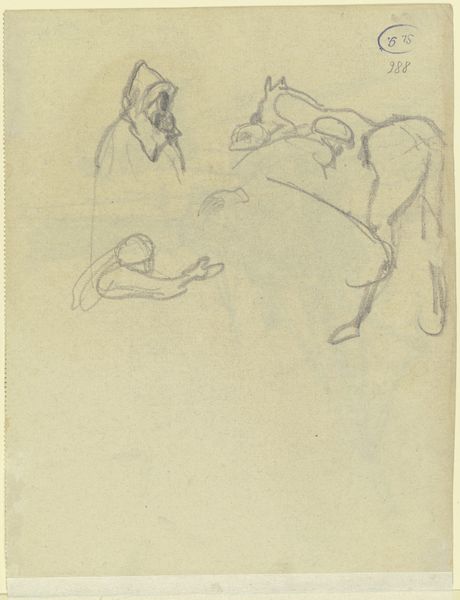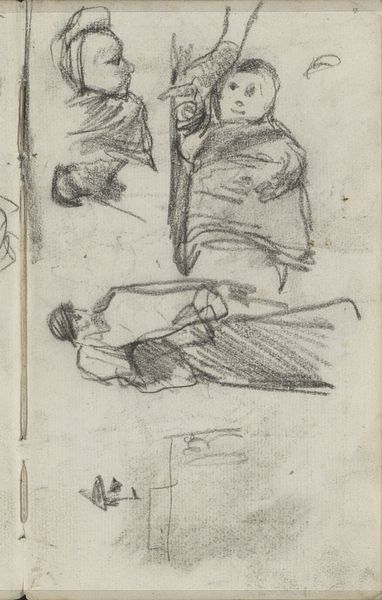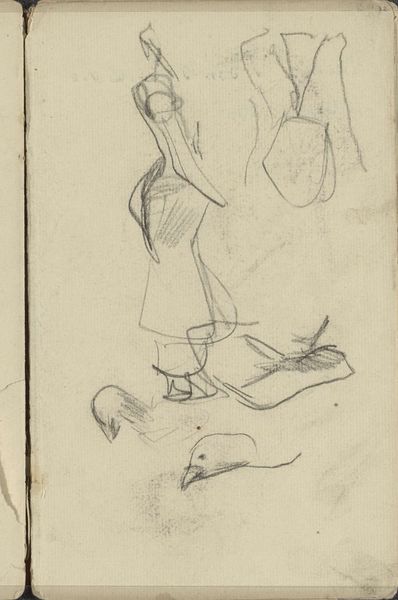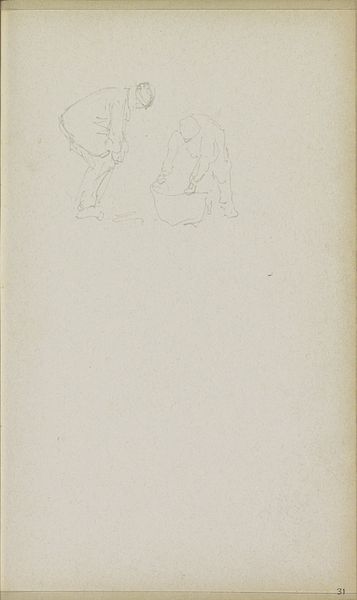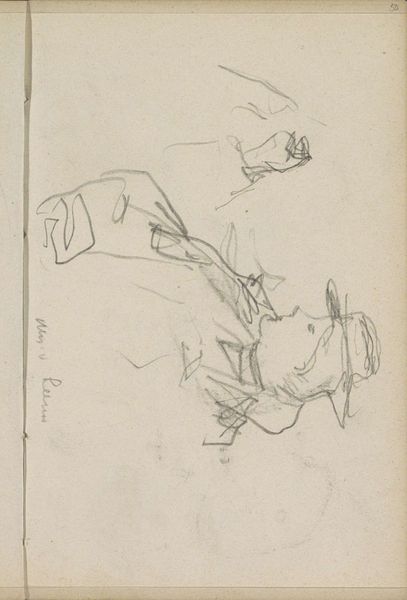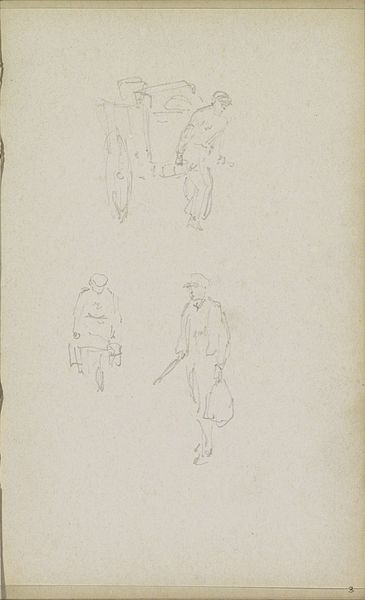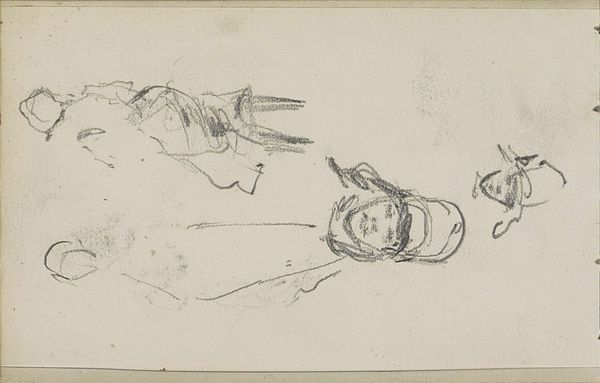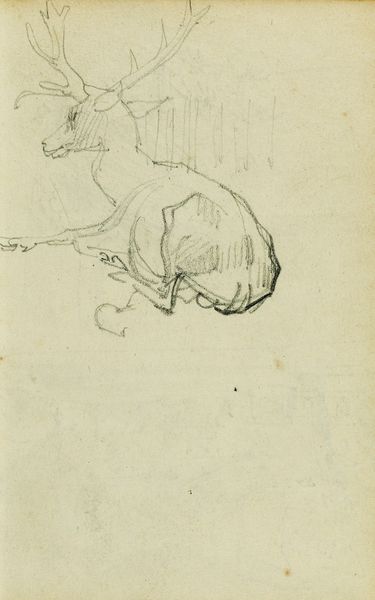
drawing, pencil
#
portrait
#
drawing
#
pencil sketch
#
figuration
#
pencil
#
academic-art
#
profile
Copyright: Rijks Museum: Open Domain
Editor: This is "Figuurstudies," figure studies, by Adrianus Eversen, dating from somewhere between 1828 and 1897. It's a pencil drawing. I find the quick lines fascinating, they really capture fleeting moments. What do you see in this piece? Curator: These figure studies, likely made as preparatory sketches, offer us a glimpse into 19th-century artistic training and the culture that surrounded it. We're looking at an academic approach, where mastering the human form was crucial, especially as figure paintings were considered central to societal narratives about power and morality. Editor: So, it was part of an established practice? Curator: Precisely. These aren't just idle doodles. Eversen was operating within an institutional framework that valued anatomical accuracy and the ability to represent the human body convincingly. Consider how art academies influenced the art market; were artists recognized without mastery over these basic representational skills? Editor: That makes me think about how even 'unfinished' sketches were highly valued and still shown today in major exhibitions... What exactly were they training for by drawing these figures? Curator: They were, through those basic sketches, learning to create paintings to hang in parlors of well-to-do citizens who had both money and societal motivations that were influenced and echoed by those same artists in those paintings. How might social class factor into our understanding and perception of art? Editor: That really highlights the intersection between artistic skill and the societal function of art back then! It definitely makes me appreciate these seemingly simple sketches in a new, more nuanced way. Thanks! Curator: It’s crucial to remember art doesn’t exist in a vacuum; even a simple pencil sketch like this reveals volumes about artistic practices and its role within specific cultural and social landscapes.
Comments
No comments
Be the first to comment and join the conversation on the ultimate creative platform.
